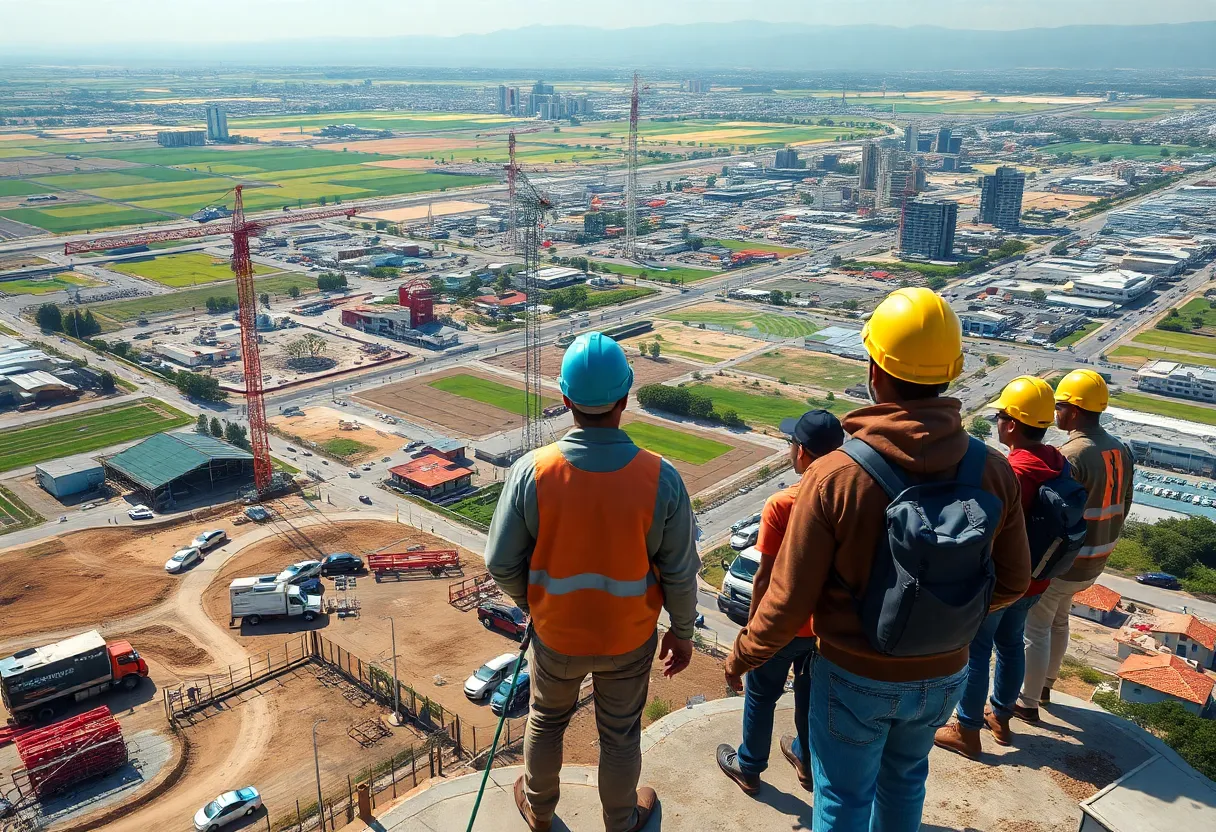News Summary
As the Trump administration prepares for mass deportation of undocumented workers, California is bracing for significant economic shifts. The UCLA Anderson Forecast predicts a decline in the labor force and employment rates, particularly in sectors heavily reliant on these workers, like agriculture and construction. With rising costs and labor shortages looming, the future of California’s economy depends on navigating these challenges effectively.
California Faces Economic Ripple Effect Amid Mass Deportation Plans
In the sunny state of California, folks are feeling the tremors of some significant economic changes as the Trump administration gears up for its mass deportation plans targeting undocumented workers. Many are wondering just what this means for our beloved Golden State, where numerous industries rely heavily on these essential workers.
The Big Picture: An Economic Shift
The UCLA Anderson Forecast brings some startling news: with millions of undocumented workers projected to leave California, the labor force is set to decline, sending ripples through the economy. The forecast estimates that as these workers withdraw, the employment rate for the remaining population could see a downturn. That’s a concern for everyone who calls California home!
Tech vs. Tradition: Shifts in Job Markets
While California’s tech scene continues to grow, there may be an interesting twist in this tale. With a focus on bringing in more H1B visa holders for tech jobs, we’ll likely see new faces arriving to fill those roles. But that won’t completely offset the losses we’re facing in other sectors.
Blueprints of Concern: The Housing Crisis
Let’s talk about housing, a hot topic in California right now. The construction industry is bracing itself for further challenges as increased deportations are expected to hit hard. With many undocumented workers currently employed in construction, the forecast predicts a direct drop in the production of single-family homes and multifamily developments. That means less housing available when we need it the most.
Adding fuel to the fire, new tariff policies on products from China, Mexico, and Canada are projected to hike housing material costs. Just imagine, costs for lighting, electrical fixtures, and even Canadian lumber could skyrocket by over 20%! This isn’t great news for would-be homeowners.
Inflation and Interest Rates: What to Expect
As we look ahead, U.S. inflation is expected to stay elevated. The Federal Reserve seems less willing to lower the federal funds rate, which could lead to pricier construction loans. When you put all of these factors together, it’s clear that the road ahead looks bumpy for California’s economy.
Residential Construction: A Slow Climb
The forecast reveals that total permitted new housing units in California are estimated to reach 102,000 by 2025 and gradually climb to 127,000 by 2027. It sounds like progress, but with such a heavy reliance on undocumented workers, the rate of growth may take longer than desired.
Unemployment: A Complex Picture
Looking to the future, the state is projected to experience an unemployment rate of 5.7% in 2025, dipping to 4.8% by 2027. This is not terrible compared to other regions, but it doesn’t tell the whole story. With big shifts on the way, industries especially vulnerable include agriculture and construction, both of which rely heavily on immigrant labor.
The Agricultural Sector: A Growing Crisis
Let’s not forget about our farms. Undocumented immigrants play a crucial role in agriculture, making up nearly half of California’s farmworkers. The looming loss of this labor force could lead to rising food costs and lower agricultural output. In fact, previous similar state-level deportation policies have resulted in significant GDP losses. Experts predict that if mass deportations proceed, the impact on California’s various sectors could be quite dire.
Labor Shortages and Economic Growth
With the potential labor shortage, we might see an uptick in wages as businesses scramble to fill these essential roles. Of course, this poses another challenge: increased costs for businesses like construction and retail—not exactly a recipe for economic growth!
In Conclusion: The Road Ahead for California
As California navigates these uncharted waters, the hope is that our interconnected economy holds strong against the rising tide of challenges. Undocumented immigrants have played an integral role in supporting our economic fabric, and their potential absence could lead to a ripple effect that affects us all.
Fingers crossed that we can find a way to navigate through these changes while keeping our communities thriving and vibrant!
Deeper Dive: News & Info About This Topic
- Los Angeles Times: California Faces Economic Ripple Effect Amid Mass Deportation Plans
- Capital & Main: Why Mass Deportations Would Cripple California’s Economy
- The Conversation: Deporting Millions of Immigrants Would Shock the US Economy
- New York Times: Immigrant Workers and Deportation Fears
- The Guardian: Mass Deportations and the Food Chain in California
- Wikipedia: Economy of California
- Google Search: mass deportation economic impact
- Google Scholar: mass deportation and economics
- Encyclopedia Britannica: California
- Google News: mass deportations

Author: STAFF HERE SAN DIEGO WRITER
The SAN DIEGO STAFF WRITER represents the experienced team at HERESanDiego.com, your go-to source for actionable local news and information in San Diego, San Diego County, and beyond. Specializing in "news you can use," we cover essential topics like product reviews for personal and business needs, local business directories, politics, real estate trends, neighborhood insights, and state news affecting the area—with deep expertise drawn from years of dedicated reporting and strong community input, including local press releases and business updates. We deliver top reporting on high-value events such as Comic-Con International, San Diego County Fair, and San Diego Pride Festival. Our coverage extends to key organizations like the San Diego Regional Chamber of Commerce and United Way of San Diego County, plus leading businesses in biotechnology, healthcare, and technology that power the local economy such as Qualcomm, Illumina, and Scripps Health. As part of the broader HERE network, including HEREAnaheim.com, HEREBeverlyHills.com, HERECostaMesa.com, HERECoronado.com, HEREHollywood.com, HEREHuntingtonBeach.com, HERELongBeach.com, HERELosAngeles.com, HEREMissionViejo.com, and HERESantaAna.com, we provide comprehensive, credible insights into California's dynamic landscape.





